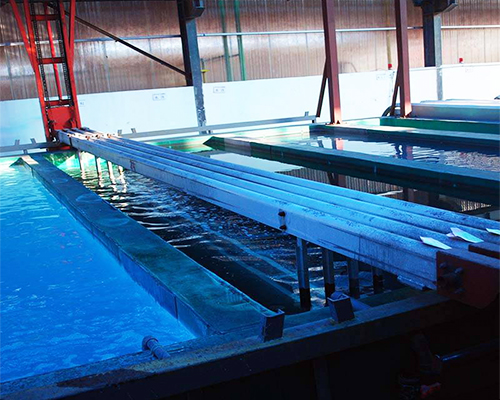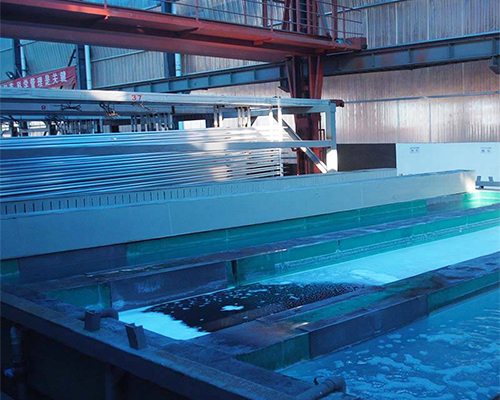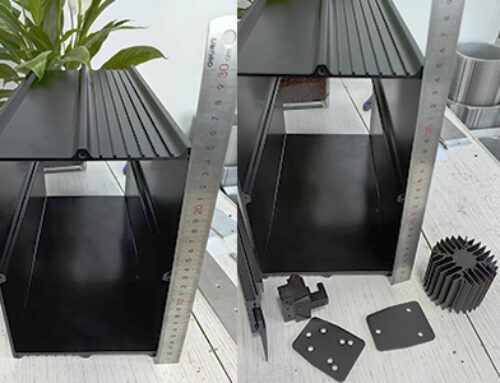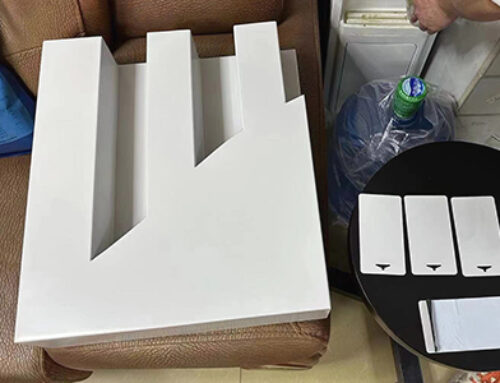Project Description
The quality of anodized oxide film and the properties of corrosion resistance mainly depend on the chemical composition of aluminium alloy, oxide film thickness and anode oxidation process conditions, such as temperature, current density. The use of water quality and filling closed after the anodic oxidation process and so on. To reduce or avoid the anodic oxidation failure, and to improve the quality of the product from the micro-location, we should take effective measures.
- For different aluminium alloys, such as casting forming, rolling forming or mechanical processing or welding of heat treatment, it is necessary to select the suitable pretreatment method according to the actual situation.
For example, the surface of the aluminium alloy that is cast, the non-machining surface should be used to remove the raw oxide film and the clay sand, etc. For higher silicon content of aluminium alloy (especially the cast aluminium) should be mixed acid solution containing 5% hydrofluoric acid-nitric acid etching activation, can effectively maintain good surface activation, to ensure the quality of oxide film. Aluminium alloy and parts with different materials are not suitable for the treatment of groove oxidation.
On lap, spot welding and the riveting combination of aluminium alloy parts, easy to form air pocket in the anodic oxidation process is not easy to rule out of aluminium alloy parts, from the quality into consideration, generally does not allow using sulfuric acid anodic oxidation process.
- The clamping material must ensure the good conduction and generally choose the hard aluminium alloy rod, and the plate shall ensure a certain elasticity and strength.
Pull hook should choose copper or copper alloy material. Used for special or general, such as anodic oxidation, the surface oxidation film must be completely defused to ensure good contact. The working clamping device should not only ensure enough conductive contact area but also reduce the indentation. If the contact surface is too small, it will result in the burning of the anode oxide parts.


- Must be strictly controlled, the temperature of sulfuric acid anodizing solution best temperature range is 15 ~ 25 ℃.
In the process of anodizing, compressed air should be used and refrigeration equipment should be equipped. Without refrigeration unit, under the condition of adding 1.5% ~ 2.0% in the sulfuric acid electrolyte c three acid or oxalic acid, lactic acid, such as carboxylic acid, can make the anodic oxidation solution temperature range for more than 35 ℃ and avoid or reduce oxide film lose and/or powder. Some process test and production practice has proven that adding suitable amount of carboxylic acid in sulfuric acid anodizing electrolyte or glycerol can effectively reduce the adverse impact of the reaction heat effect and can decrease the thickness of the oxide film and hardness increase the anodic oxidation under the condition of the temperature of the electrolyte allowable limit, on the premise of guaranteed quality, improve production efficiency. In addition, under the condition of constant temperature control, it is also necessary to control the anode current density effectively to guarantee the quality of the oxide film.
- The water quality and the harmful impurities in the electrolyte used in anodized electrolyte must be strictly controlled.
It is not suitable to use tap water for the preparation of anodized anodic oxidation solution, especially not cloudy with Ca2 +, Mg2 +, SiO32- and Cl– content of tap water. In general, the Cl– concentration of water at 25mg/L will have a harmful effect on anodization of aluminium extrusion. Cl– (including other halogen elements) can destroy the oxide film formation, even without the oxide film. Sulfuric acid anodizing should be used to soften water, deionized water or distilled water, and the Cl– in the electrolyte is less than 15mg/L, and the total mineral is less than 50mg/L.
In the process of anodizing process, the sulfuric acid solution will produce oil foam and suspended impurities, which should be eliminated regularly. Other harmful impurities commonly found in the oxidation solution of sulphuric oxide are Cu2+, Fe3+, Al3+ and so on. If the content of impurities exceeds the allowable content, harmful effects can be produced, and the sulfuric acid solution can be partially or completely replaced to effectively ensure the oxidation quality of aluminium sulfuric acid.
The aluminium sulfuric acid anodic oxidation treatment is widely used and mature corrosion protective decoration process, as long as strict process conditions, the serious operation, sulfuric acid anodized oxide film quality can be guaranteed.



